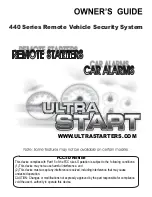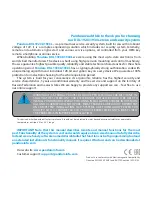
Mercedes-Benz Body & Equipment Guideline for Metris - BM 447, Version November 27, 2015.
!
Please observe the revision notes compared to 09/18/2015 ! Only print out complete sections of the current version!
83
7.6 Attachments
7 Modifications to the basic vehicle
7.6
Attachments
The permissible center of gravity locations and axle
loads must always be adhered to, see chapter 5 “Tech-
nical threshold values for planning” (
Note that this may interfere with driving assis-
tance systems, see 9.7 “Driver assistance systems”
(
Attachments must not impair the function of vehicle
parts.
Comply with national legal requirements.
7.6.1
Attachment above cab
•
The permissible center of gravity, see 5.1 “Thresh-
old values of basic vehicle” (
Page 47) and
front axle load, see 5.2 “Suspension threshold
values” (
Page 48) must be observed.
•
The roof connection must be designed as per
7.2.6 “Modifications to the roof structure”
(
7.6.2
Roof racks
•
Make sure that the load is distributed evenly across
the entire roof area.
•
Installation of a stabilizer bar on the front axle is
recommended.
•
Support feet must be spaced at regular inter-
vals. The load per support foot may not exceed
25 kg = 55 lbs.
•
With shorter roof racks, the load must be reduced
proportionally.
Roof rack threshold values
Max.
roof loads
Minimum no.
of support
feet
Normal roof
150 kg = 330 lbs
6
7.6.3
Fitted shelving
General
Fitted shelving must:
•
Be sufficiently strong and self-supporting.
•
Rest on the crossmembers and longitudinal mem-
bers of the vehicle floor.
•
Equally distribute all forces and loads.
•
The application of force must take place through
the floor attachments.
•
The shelving must be supported by the fastening
points on the vehicle sidewall.
!
Note
On no account should attachments transfer forces
only to the vehicle sidewalls. Point loads must not be
applied to the vehicle wall. Otherwise, there is a risk
of damage to the sidewall.
















































